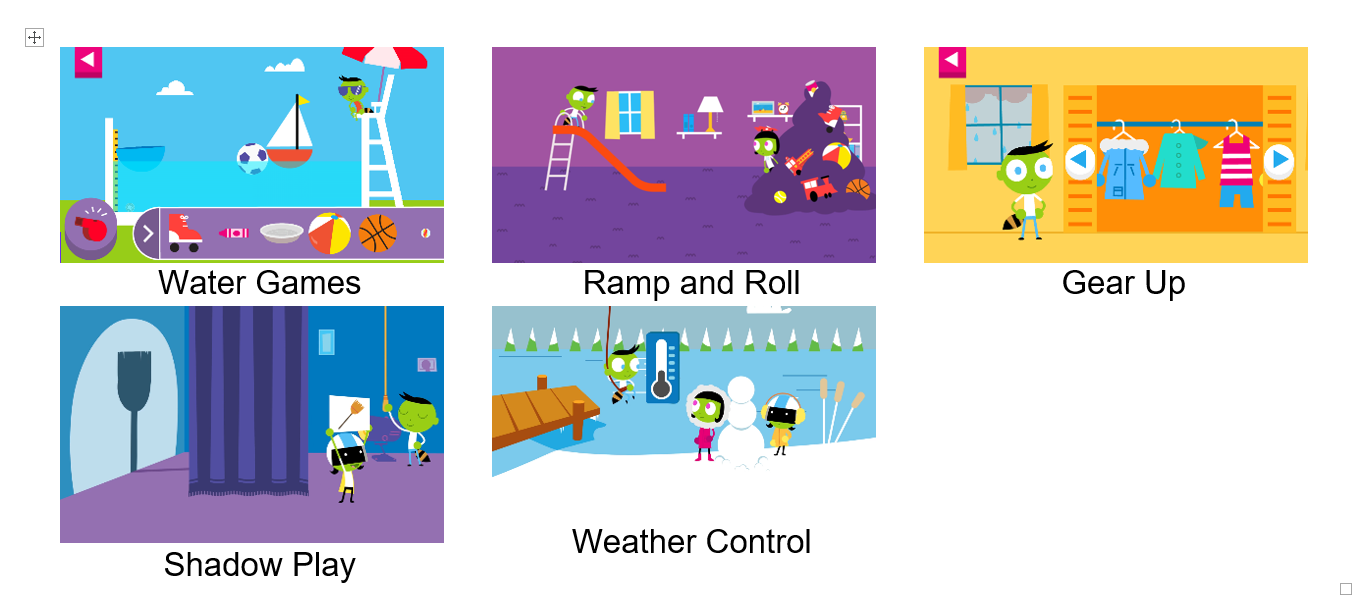Have It Both Ways: Using Children’s Science Apps to Support Hands-On and Digital Learning

As a parent or caretaker of a young child (ages 3–5) it can be challenging to know which apps will really support your child’s emerging science understanding and skills. Research shows that many parents also express uncertainty about what science is accessible to young children and how to facilitate their children’s play in ways that foster science exploration.
The best way to go about this is to look for science apps which promote children’s science learning through digital science games and real-world playful science experiences. Why include hands-on activities in an app? It has been shown that opportunities to investigate objects and materials in the real world are vital for building children’s foundational science knowledge and skills, and for supporting their positive attitudes toward science.
In our research we had the opportunity to investigate the The PBS KIDS Play & Learn Science app with the help of 32 families each of whom had at least one 3-, 4-, or 5-year-old child at home. We asked parents to use the resources in the app with their children over a four-week period, focusing on one topic per week (we combined Gear Up and Weather Control). We also engaged families in two science events that included familiarizing parents with the app resources; supporting family interactions during digital game play; and engaging them in a variety of hands-on family science activities and explorations they could do together at home.
What we learned
We found that the app, along with the supports we provided during the study, positively influenced children’s science learning and their use of science-related vocabulary. You can learn more about the results of our study here.
As we reflected on our experience working with the families during the study, we also found that 5 parent strategies were particularly useful for promoting children’s science learning:
- Get involved in your child’s digital play. You can boost your child’s learning from educational media by interacting with them as they play digital games. Playing digital games alongside your child is also a great way to show them that you value their interests and ideas. Parents in our study were often surprised to observe their children’s definite preferences for one game over another as well as their skill at navigating the games.
- Observe your child’s independent hands-on play. Observing your child’s open-ended play with everyday materials can give you a window into their abilities and interests. We found that parents were often amazed by the perseverance and creativity children exhibited when they were engaged in playful tasks that interested them, such as building cardboard ramps for balls or making foil boats that would float. Observing your child can provide information about what they know and are able to do that they aren’t yet able to express verbally.
- Ask questions that promote your child’s exploration and inquiry. You can support your child’s digital and real-world explorations by focusing on questions that promote inquiry and thinking rather than ones that suggest correct answers. While playing Shadow Play, or doing hands-on explorations with flashlights, parents in our study experimented with questions like How do you think that shadow will change when you move the light? instead of questions like What is a shadow? They found themselves being impressed with their children’s good ideas and the reasons they gave for them.
-
Make connections between digital and real-world experiences. These connections often seem obvious to adults, but children benefit when you make them explicit. Help your child understand how the digital games they play are related to real-world phenomena by talking about these connections at home and in your community. The “Parents” section of the app includes lots of ideas for doing this. A parent in our study told us that after playing the Ramp and Roll digital game, she encouraged her child to test his ball on different slides at the park. He was excited to tackle this challenge and to discover that the steeper one made the ball go faster, just like in the game!
- Repeat interesting explorations. Children learn from engaging with similar content over time and in different settings. Parents in our study reported, for example, that their children enjoyed sinking and floating different items in the digital games, in the tub, in the kitchen sink, and anywhere else there was a water source over and over again. Repeating similar activities in different contexts helps deepen children’s understanding of what things do and how they work.
What families know about science is less important than how they observe, encourage, and engage with their children during digital and real-world playful science experiences. Our hope is that quality resources, such as the PBS KIDS Play and Learn Science app, can support family science exploration, interaction, and conversation and help parents feel more confident and comfortable about nurturing their children’s early science learning.
The PBS KIDS Play & Learn Science app
The PBS KIDS Play & learn Science app includes digital and hands-on resources on 5 physical science topics, pictured below. In addition to activities for children, the app includes resources to help parents facilitate their children’s digital and hands-on science play.

Topic in the app includes three lively digital games for children and multiple resources to support parents and families including:
- Information about why science is important for young children
- Tips for interacting and talking with children as they play the science games
- Connections between the games and real-world science experiences
- Hands-on activities using simple everyday materials to do science
- Children’s book suggestions on each science topic
- An online journal that helps parents promote children’s scientific thinking
References
Anderson, Huston, Schmitt, Linebarger, & Wright, 2001; Fisch, Truglio, & Cole, 1999; Hurwitz, 2018; Moorthy et al., 2013; Pasnik, 2018; Rideout, 2017; Schmidt & Anderson, 2006
Kirkorian, Wartella, & Anderson, 2008
Vom Orde, 2012; Wainwright, 2006; Kucirkova, Sheehy, and Messer, 2015; Alade & Nathanson, 2016; Donohue, 2017
Vom Orde, 2012; Mares, 2016; Skouteris & Kelly, 2006
Cindy Hoisington is an early childhood and elementary science specialist and a project director at Education Development Center.
Claire Christensen is an education researcher at SRI International in the Center for Learning and Development. She conducts research and program evaluations on educational media for young children. She is particularly interested in media’s potential to promote social-emotional learning and STEM skills. She earned her Ph.D. in community and prevention research from the University of Illinois at Chicago.